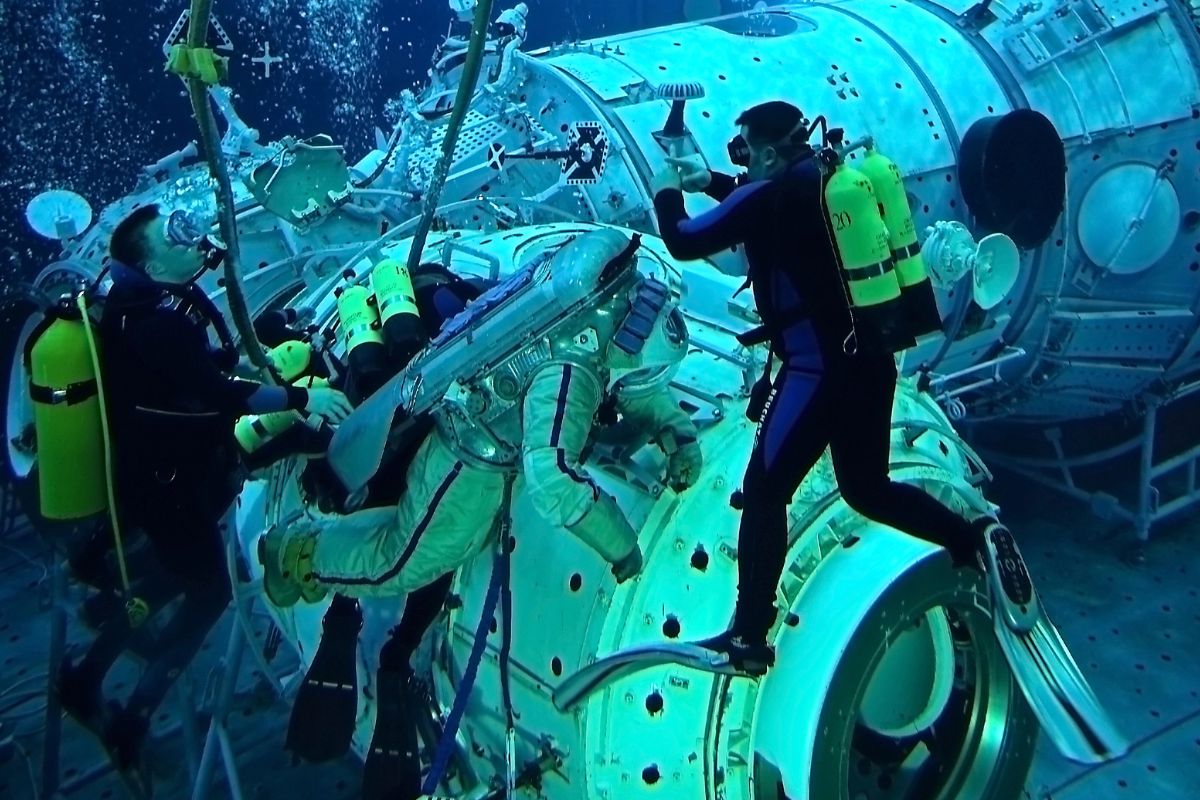China’s ambitious underwater research facility marks a significant leap in marine exploration capabilities. The project, confirmed by Chinese authorities, aims to establish a permanent presence beneath the waves by 2030. This innovative installation will enable scientists to conduct extended studies of deep ocean environments at depths exceeding 6,500 feet, revolutionizing our understanding of underwater ecosystems.
Pioneering deep-sea research through permanent underwater habitation
The Chinese government has officially greenlit plans for constructing what experts are calling a “deep-sea space station.” This revolutionary facility will function as an underwater research hub situated approximately 6,500 feet below sea level. The comparison to space exploration is apt considering that over 80% of our global oceans remain unexplored, presenting challenges similar to those faced in outer space research.
Marine scientists currently face significant access limitations when studying deep ocean environments. The new station addresses this fundamental problem by providing accommodations for up to six researchers to live and work underwater for periods extending to a month. This capability mirrors the functionality of the International Space Station, which has transformed our approach to space research.
According to South China morning post, this underwater installation represents one of the most technologically complex projects of its kind. The facility will focus primarily on studying “cold seeps” – regions where hydrocarbon or methane-rich fluids emerge from beneath the ocean floor. These unique geological formations provide crucial habitats for numerous deep-sea species and may hold keys to developing alternative energy solutions through their natural gas properties.
The station’s permanent monitoring capabilities will enable scientists to conduct continuous analysis of these previously difficult-to-access environments. Researchers will be able to track ecological changes, monitor tectonic activity, and study microorganisms that could play vital roles in degrading dangerous oil spills in marine environments.
Technical innovations powering China’s underwater ambitions
The underwater station incorporates several cutting-edge technologies that make this ambitious project possible. The facility will employ a comprehensive “four-dimensional” monitoring system that integrates various research platforms for maximum data collection capabilities:
- Unmanned submersible vehicles for remote exploration
- Support ships operating on the surface
- Seabed observatories for continuous monitoring
- Advanced life support systems for human habitation
- Reinforced structures to withstand extreme pressure conditions
This integrated approach mirrors other advanced scientific installations like the ESA’s precision instruments on the ISS, bringing similar technological sophistication to underwater research. China’s growing expertise in space exploration, demonstrated through missions such as Tianwen-2’s asteroid sample return, appears to be informing their approach to deep-sea exploration.
The technological challenges of building at such depths are considerable. Engineers must design systems capable of withstanding pressures nearly 200 times greater than at sea level while ensuring reliable power generation, life support, and communications. Unlike surface installations that might experience damage from events like the recent Starship 36 test explosion, underwater structures face constant environmental stresses.
Recent advances in mapping ocean floors, such as NASA’s identification of nearly 100,000 underwater mountains, provide crucial data for selecting optimal construction sites. The facility’s location must balance scientific priorities with practical engineering considerations.
Resource exploration and geopolitical implications
Beyond pure scientific inquiry, the station positions China advantageously regarding underwater resource exploration. The South China Sea, where this facility will likely be constructed, contains estimated hydrocarbon and methane deposits amounting to approximately 70 billion tonnes. These represent significant untapped energy resources with substantial economic potential.
The strategic positioning of this research station raises important geopolitical questions. Several nations including Taiwan, Vietnam, Malaysia, Brunei, and the Philippines contest China’s sovereign claims over parts of the South China Sea. These territorial disputes center largely on access to the valuable resources that the station aims to study.
The project’s timeline might face complications from these ongoing disputes. Similar to how climate change affects geological stability in regions like the Alps, political tensions can disrupt development schedules and research priorities.
Historical precedent suggests that scientific installations can sometimes transcend political boundaries. Archaeological discoveries like the French military’s record-breaking find at 8,421 feet demonstrate how deep-sea exploration can yield unexpected cultural and historical insights beyond resource identification.
The development of this underwater station occurs against a backdrop of increased seismic monitoring needs in marine environments. Recent events like the magnitude 4.6 earthquake felt in Naples highlight the importance of improved underwater monitoring systems for both scientific and public safety purposes.
Transforming marine science through long-term presence
When operational by 2030, this facility will fundamentally change how scientists study deep ocean environments. Rather than brief expeditions limited by human physiological constraints, researchers will maintain a persistent presence in previously inaccessible realms of our planet. This capability mirrors the transformation that permanent space stations brought to astronomical research.
The scientific applications extend beyond energy resource identification. Researchers may discover new biological compounds with pharmaceutical applications, develop improved methods for monitoring underwater geological activity, and better understand deep ocean ecosystems that remain largely mysterious to science.
As climate change continues to impact marine environments, facilities like China’s deep-sea station may prove crucial for tracking ecological shifts in real-time. The station represents not just a technological achievement but a new paradigm in how humanity studies and interacts with Earth’s last great frontier.
